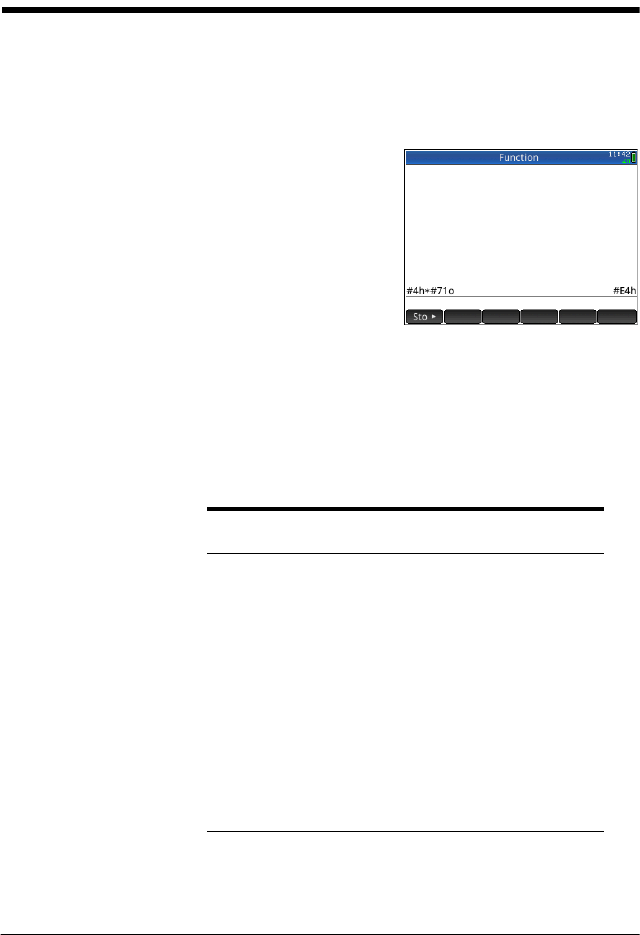
Basic Integer arithmetic 575
28
Basic Integer arithmetic
The common number base used in contemporary mathematics is
base 10. By default, all calculations performed by the HP Prime
are carried out in base 10, and all results are displayed in base
10.
However, the HP Prime enables
you to carry out integer
arithmetic in four bases: decimal
(base 10), binary, (base 2),
octal (base 8), and hexadecimal
(base 16). For example, you
could multiply 4 in base 16 by
71 in base 8 and the answer is
E4 in base 16. This is equivalent in base 10 to multiplying 4 by
57 to get 228.
You indicate that you are about to engage in integer arithmetic
by preceding the number with the pound symbol (#, got by
pressing
Az). You indicate what base to use for the
number by appending the appropriate base marker:
Thus #11b represents 3
10
. The base marker b indicates that the
number is to interpreted as a binary number: 11
2
. Likewise #E4h
Base marker Base
[blank] Adopt the defualt base (see
“The default base” on
page 576)
ddecimal
bbinary
ooctal
hhexadecimal


















